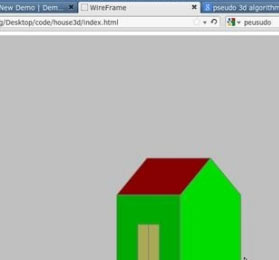php下的RSA算法实现_PHP教程_编程技术
2013-12-20 13:00:23
[小 大]
已经帮助:人解决问题
/*
* Implementation of the RSA algorithm
* (C) Copyright 2004 Edsko de Vries, Ireland
*
* Licensed under the GNU Public License (GPL)
*
* This implementation has been verified against [3]
* (tested Java/PHP interoperability).
*
* References:
* [1] "Applied Cryptography", Bruce Schneier, John Wiley & Sons, 1996
* [2] "Prime Number Hide-and-Seek", Brian Raiter, Muppetlabs (online)
* [3] "The Bouncy Castle Crypto Package", Legion of the Bouncy Castle,
* (open source cryptography library for Java, online)
* [4] "PKCS #1: RSA Encryption Standard", RSA Laboratories Technical Note,
* version 1.5, revised November 1, 1993
*/
/*
* Functions that are meant to be used by the user of this PHP module.
*
* Notes:
* - $key and $modulus should be numbers in (decimal) string format
* - $message is expected to be binary data
* - $keylength should be a multiple of 8, and should be in bits
* - For rsa_encrypt/rsa_sign, the length of $message should not exceed
* ($keylength / 8) - 11 (as mandated by [4]).
* - rsa_encrypt and rsa_sign will automatically add padding to the message.
* For rsa_encrypt, this padding will consist of random values; for rsa_sign,
* padding will consist of the appropriate number of 0xFF values (see [4])
* - rsa_decrypt and rsa_verify will automatically remove message padding.
* - Blocks for decoding (rsa_decrypt, rsa_verify) should be exactly
* ($keylength / 8) bytes long.
* - rsa_encrypt and rsa_verify expect a public key; rsa_decrypt and rsa_sign
* expect a private key.
*/
function rsa_encrypt($message, $public_key, $modulus, $keylength)
{
$padded = add_PKCS1_padding($message, true, $keylength / 8);
$number = binary_to_number($padded);
$encrypted = pow_mod($number, $public_key, $modulus);
$result = number_to_binary($encrypted, $keylength / 8);
return $result;
}
function rsa_decrypt($message, $private_key, $modulus, $keylength)
{
$number = binary_to_number($message);
$decrypted = pow_mod($number, $private_key, $modulus);
$result = number_to_binary($decrypted, $keylength / 8);
return remove_PKCS1_padding($result, $keylength / 8);
}
function rsa_sign($message, $private_key, $modulus, $keylength)
{
$padded = add_PKCS1_padding($message, false, $keylength / 8);
$number = binary_to_number($padded);
$signed = pow_mod($number, $private_key, $modulus);
$result = number_to_binary($signed, $keylength / 8);
return $result;
}
function rsa_verify($message, $public_key, $modulus, $keylength)
{
return rsa_decrypt($message, $public_key, $modulus, $keylength);
}
/*
* Some constants
*/
define("BCCOMP_LARGER", 1);
/*
* The actual implementation.
* Requires BCMath support in PHP (compile with --enable-bcmath)
*/
//--
// Calculate (p ^ q) mod r
//
// We need some trickery to [2]:
// (a) Avoid calculating (p ^ q) before (p ^ q) mod r, because for typical RSA
// applications, (p ^ q) is going to be _WAY_ too large.
// (I mean, __WAY__ too large - won't fit in your computer's memory.)
// (b) Still be reasonably efficient.
//
// We assume p, q and r are all positive, and that r is non-zero.
//
// Note that the more simple algorithm of multiplying $p by itself $q times, and
// applying "mod $r" at every step is also valid, but is O($q), whereas this
// algorithm is O(log $q). Big difference.
//
// As far as I can see, the algorithm I use is optimal; there is no redundancy
// in the calculation of the partial results.
//--
function pow_mod($p, $q, $r)
{
// Extract powers of 2 from $q
$factors = array();
$div = $q;
$power_of_two = 0;
while(bccomp($div, "0") == BCCOMP_LARGER)
{
$rem = bcmod($div, 2);
$div = bcdiv($div, 2);
if($rem) array_push($factors, $power_of_two);
$power_of_two++;
}
// Calculate partial results for each factor, using each partial result as a
// starting point for the next. This depends of the factors of two being
// generated in increasing order.
$partial_results = array();
$part_res = $p;
$idx = 0;
foreach($factors as $factor)
{
while($idx < $factor)
{
$part_res = bcpow($part_res, "2");
$part_res = bcmod($part_res, $r);
$idx++;
}
array_pus($partial_results, $part_res);
}
// Calculate final result
$result = "1";
foreach($partial_results as $part_res)
{
$result = bcmul($result, $part_res);
$result = bcmod($result, $r);
}
return $result;
}
//--
// Function to add padding to a decrypted string
// We need to know if this is a private or a public key operation [4]
//--
function add_PKCS1_padding($data, $isPublicKey, $blocksize)
{
$pad_length = $blocksize - 3 - strlen($data);
if($isPublicKey)
{
$block_type = "/x02";
$padding = "";
for($i = 0; $i < $pad_length; $i++)
{
$rnd = mt_rand(1, 255);
$padding .= chr($rnd);
}
}
else
{
$block_type = "/x01";
$padding = str_repeat("/xFF", $pad_length);
}
return "/x00" . $block_type . $padding . "/x00" . $data;
}
//--
// Remove padding from a decrypted string
// See [4] for more details.
//--
function remove_PKCS1_padding($data, $blocksize)
{
assert(strlen($data) == $blocksize);
$data = substr($data, 1);
// We cannot deal with block type 0
if($data{0} == '/0')
die("Block type 0 not implemented.");
// Then the block type must be 1 or 2
assert(($data{0} == "/x01") || ($data{0} == "/x02"));
// Remove the padding
$offset = strpos($data, "/0", 1);
return substr($data, $offset + 1);
}
//--
// Convert binary data to a decimal number
//--
function binary_to_number($data)
{
$base = "256";
$radix = "1";
$result = "0";
for($i = strlen($data) - 1; $i >= 0; $i--)
{
$digit = ord($data{$i});
$part_res = bcmul($digit, $radix);
$result = bcadd($result, $part_res);
$radix = bcmul($radix, $base);
}
return $result;
}
//--
// Convert a number back into binary form
//--
function number_to_binary($number, $blocksize)
{
$base = "256";
$result = "";
$div = $number;
while($div > 0)
{
$mod = bcmod($div, $base);
$div = bcdiv($div, $base);
$result = chr($mod) . $result;
}
return str_pad($result, $blocksize, "/x00", STR_PAD_LEFT);
}
?>
(责任编辑:)
友情链接:联系人:QQ370158739




